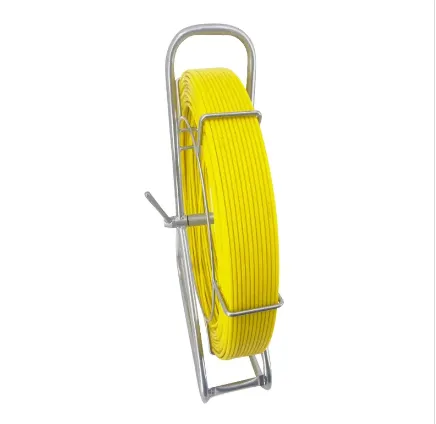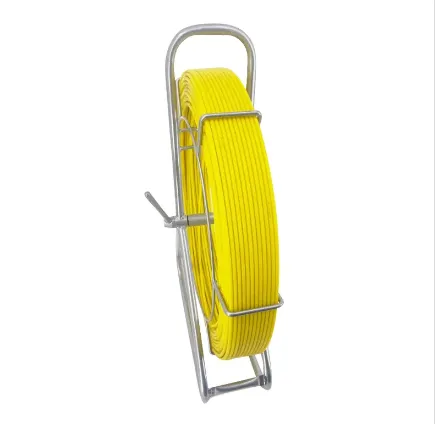
-
 Moafrika
Moafrika -
 Sealbania
Sealbania -
 Seamharic
Seamharic -
 Searabia
Searabia -
 Searmenia
Searmenia -
 Se-Azerbaijani
Se-Azerbaijani -
 Sebasque
Sebasque -
 Sebelarusia
Sebelarusia -
 Benghali
Benghali -
 Sebosnia
Sebosnia -
 Se-Bulgaria
Se-Bulgaria -
 Secatalan
Secatalan -
 Sebuano
Sebuano -
 Corsican
Corsican -
 Secroatia
Secroatia -
 Czech
Czech -
 Sedanishe
Sedanishe -
 Se-Dutch
Se-Dutch -
 Senyesemane
Senyesemane -
 Esperanto
Esperanto -
 Seestonia
Seestonia -
 Sefinnishe
Sefinnishe -
 Sefora
Sefora -
 Sefrisia
Sefrisia -
 Segalician
Segalician -
 Segeorgia
Segeorgia -
 Sejeremane
Sejeremane -
 Segerike
Segerike -
 Segujarati
Segujarati -
 Secreole sa Haiti
Secreole sa Haiti -
 Hausa
Hausa -
 siwaiian
siwaiian -
 Seheberu
Seheberu -
 Che
Che -
 Miao
Miao -
 Se-Hungary
Se-Hungary -
 Seiceland
Seiceland -
 igbo
igbo -
 Seindonesia
Seindonesia -
 irish
irish -
 Setaliana
Setaliana -
 Sejapane
Sejapane -
 Se-Javanese
Se-Javanese -
 Kannada
Kannada -
 kazakh
kazakh -
 Khmer
Khmer -
 Rwanda
Rwanda -
 Sekorea
Sekorea -
 Sekurdish
Sekurdish -
 Sekyrgyz
Sekyrgyz -
 Lefuba
Lefuba -
 Selatine
Selatine -
 Selatvia
Selatvia -
 Selithuania
Selithuania -
 Se-Luxembourgish
Se-Luxembourgish -
 Semacedonia
Semacedonia -
 Semalagasy
Semalagasy -
 Semalay
Semalay -
 Semalayalam
Semalayalam -
 Semalta
Semalta -
 Semaori
Semaori -
 Marathi
Marathi -
 Mongolian
Mongolian -
 Myanmar
Myanmar -
 tsa Nepali
tsa Nepali -
 Norwegian
Norwegian -
 Norwegian
Norwegian -
 Occitan
Occitan -
 Sepashto
Sepashto -
 Sepersia
Sepersia -
 Sepolishe
Sepolishe -
 Sepotoketsi
Sepotoketsi -
 Sepunjabi
Sepunjabi -
 Seromania
Seromania -
 Serussia
Serussia -
 Sesamoa
Sesamoa -
 Segaeli sa Scotland
Segaeli sa Scotland -
 Seserbia
Seserbia -
 Senyesemane
Senyesemane -
 Seshona
Seshona -
 Sindhi
Sindhi -
 Sesinhala
Sesinhala -
 Seslovak
Seslovak -
 Seslovenia
Seslovenia -
 Somalia
Somalia -
 Sepanish
Sepanish -
 Sesundanese
Sesundanese -
 Seswahili
Seswahili -
 Seswedishe
Seswedishe -
 Setagalog
Setagalog -
 Se-Tajik
Se-Tajik -
 Setamil
Setamil -
 Setatare
Setatare -
 Setelugu
Setelugu -
 Sethai
Sethai -
 Se-Turkey
Se-Turkey -
 Turkmen
Turkmen -
 Seukraine
Seukraine -
 Seurdu
Seurdu -
 Uighur
Uighur -
 Seuzbek
Seuzbek -
 Se-Vietnamese
Se-Vietnamese -
 Welsh
Welsh -
 Thusa
Thusa -
 Yiddish
Yiddish -
 Yoruba
Yoruba -
 Sezulu
Sezulu


Apr 15, 2025 11:13 Khutlela lethathamong
Lisebelisoa tsa Bohlokoa bakeng sa ho Kenya Cable e Sebetsang le ho Tšoasa Litlhapi tsa Conduit

Ho kenya li-cable ho li-conduits e ka ba mosebetsi o boima, o hlokang ho nepahala, ho sebetsa hantle, le lisebelisoa tse nepahetseng ho netefatsa hore ts'ebetso e sebetsa hantle. Hore na o rakonteraka, ramotlakase, kapa setsebi, ea nang le lisebelisoa tsa boleng bo holimo joalo ka duct rodder for sale, tlhapi theipi terata hula, le hula molamu o sututsang e ka nolofatsa mosebetsi haholo. Lisebelisoa tsena li thusa ho itlhoekisa ho ts'oasa litlhapi ka khoele, ho fokotsa nako ea mosebetsi le ho fokotsa kotsi ea ho senyeha ha cable.
Ho Khetha Se Nepahetseng Rodder Duct bakeng sa ho Kenya Cable
A kotopo ea rodder ke sesebelisoa sa bohlokoa bakeng sa ho tsamaisa likhoele ka li-conduits, haholo-holo lits'ebetsong tse telele le tse rarahaneng. E fumaneha ka boholo le lisebelisoa tse fapaneng, e fana ka ho feto-fetoha ha maemo le matla a hlokahalang ho tsamaea libakeng tse thata le ho kobeha. Ha u batla a duct rodder for sale, ho bohlokoa ho nahana ka bolelele, bophara, le lisebelisoa ho netefatsa hore li tsamaellana le litlhoko tsa projeke ea hau.
Bakeng sa litsebi tse sebetsang ka tlas'a lefatše kapa liindasteri lisebelisoa tsa li-cable, boleng bo phahameng kotopo ea rodder e netefatsa ho hula ha cable ka mokhoa o boreleli le o sebetsang hantle, ho fokotsa likhohlano le ho hanyetsa. Li-rodders tse ngata tsa sejoale-joale li entsoe ka moaho o tšoarellang oa fiberglass, tse fanang ka maemo a feto-fetohang ha li ntse li boloka matla. Ho tsetela ho e tšepahalang kotopo ea rodder e ka boloka nako le matsapa ha e ntse e netefatsa ts'ebetso ea ho kenya e nepahetseng le e se nang tšenyo.
Ho Ntlafatsa Bokhoni ba Tlhapi le Lithupa tsa Push
Ntle le ho sebelisa a kotopo ea rodder,a tlhapi theipi terata hula ke sesebelisoa se seng sa bohlokoa sa ho tataisa lithapo le likhoele ka likotopo. Sesebediswa sena se na le thuso ka ho khetheha mathateng a lithapo tsa mehala e mokhuts'oane, ho thusa ho tsamaea litseleng tsa conduit habonolo. Sebopeho se tenyetsehang empa se tiile sa a tlhapi theipi terata hula e e lumella ho feta har'a litšitiso ha e ntse e boloka lithapo li ntse li tiile.
Sesebelisoa se seng sa bohlokoa sa ho kenya cable ke hula molamu o sututsang. Lithupa tsena li fana ka taolo e eketsehileng ha u sututsa kapa u hula lithapo ka litsamaiso tse moqotetsane kapa tse rarahaneng tsa likotopo. Matla a bona a phahameng le kaho e bobebe e ba etsa khetho e babatsehang ea ho tsamaisa likhoele maemong ao ho kotopo ea rodder kapa tlhapi theipi terata hula e ka tobana le bothata.
Ho sebelisa motsoako oa a kotopo ea rodder, tlhapi theipi terata hula, le hula molamu o sututsang e ntlafatsa haholo bokhoni ba ho ts'oasa litlhapi ka khoele. Lisebelisoa tsena li thusa ho etsa bonnete ba hore lithapo li kenngoa hantle ntle le matla a feteletseng, ho fokotsa ho senyeha ha lithapo le kotopo ka boeona.

E atlehile ho ts'oasa litlhapi ka khoele le ho kenya cable ho itšetlehile ka ho sebelisa lisebelisoa tse molemo ka ho fetisisa bakeng sa mosebetsi. Ea boleng bo holimo duct rodder for sale e fana ka ho tenyetseha le matla a hlokahalang bakeng sa ho hula likhoele ka nako e telele conduit matha, ha a ntse a tlhapi theipi terata hula le hula molamu o sututsang fana ka ts'ehetso e eketsehileng bakeng sa lits'ebetso tse nepahetseng le tse laoloang. Ka ho khetha lisebelisoa tse nepahetseng, litsebi li ka khona ho kenya li-cable tse bonolo, tse potlakileng le tse sebetsang hantle, tse lebisang liphellong tse ntle tsa morero le ho fokotsa litšenyehelo tsa basebetsi.
Litaba tsa moraorao
Hydraulic Crimping Tool – Precision & Heavy-Duty Speed
LitabaNov.05,2025
Cable Pulling Swivel | High-Strength, Anti-Twist, Stainless
LitabaNov.04,2025
Cable Pulling Tools – Pro-Grade, Safe, Fast Install
LitabaNov.03,2025
Hydraulic Crimping Tool – Fast, Precise, Quick-Change Dies
LitabaNov.02,2025
Hydraulic Crimping Tool for Sale | Fast, Precise, Heavy-Duty
LitabaNov.01,2025
Duct Rodder for Sale – Non-Conductive, Durable Fiberglass
LitabaOct.31,2025








